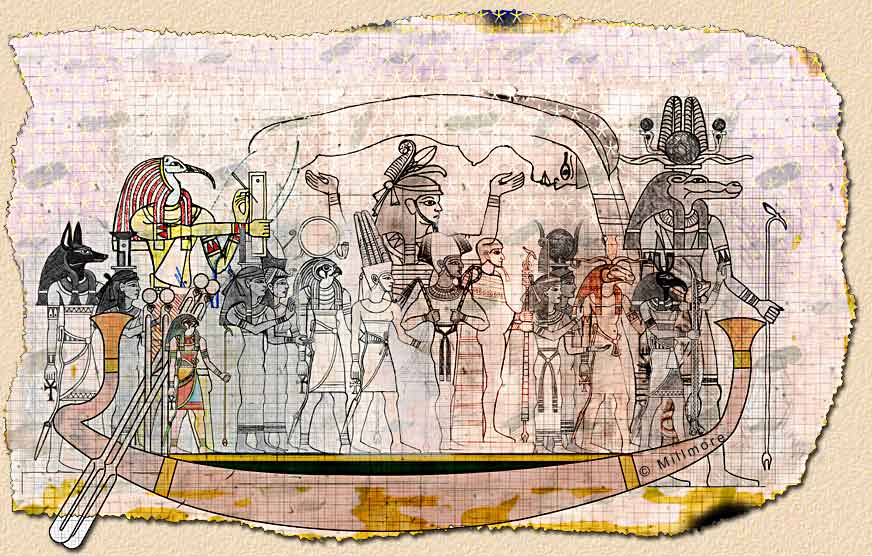steve_bank
Diabetic retinopathy and poor eyesight. Typos ...
The bible mythology is simplistic compared to other traditions. What stands out is there are no females in bible theology. Maybe that is why Chrtianity,Islam, and Judaism are so screwed up on relations between the sexes.
Yaweh never gets laid.
The oldest known tradition is said to be Hindu.
What is inteesrting is that mythologies developed in Central/South America in relative isolation from the rest of the world.
It does not take an expert to see gods are reflections, projections, or incarnations of us humans.

 blog.prepscholar.com
blog.prepscholar.com

 en.wikipedia.org
en.wikipedia.org
 www.villapalmarcancun.com
www.villapalmarcancun.com

 discoveringegypt.com
discoveringegypt.com
Yaweh never gets laid.
The oldest known tradition is said to be Hindu.
What is inteesrting is that mythologies developed in Central/South America in relative isolation from the rest of the world.
It does not take an expert to see gods are reflections, projections, or incarnations of us humans.

Ultimate Guide to the 28 Main Greek Gods and Goddesses
Curious about Greek mythology? Learn all the important Greek gods' names, origins, and attributes, plus check out a family tree to see how they're related.
 blog.prepscholar.com
blog.prepscholar.com
Zeus
God of: Storms, fate and destiny, law and order, kingship; king of the gods.
Origin: Child of Titans Kronos and Rhea
Usually Depicted As: A strong, mature, kingly man with a dark beard.
Symbols and Icons: Thunderbolt, eagle, oak, bull
Major Relationships
Married to Hera
Brother of Hera, Poseidon, Hades, Demeter, and Hestia
Fathered many of the Olympian gods: Athena, Persephone, Ares, Apollo and Artemis, Dionysus, and many other more minor gods and demigods. Only Ares was fathered with Hera; the rest were from extramarital dalliances.
Major Attributes
After Zeus threw down Kronos, he, Poseidon, and Hades drew lots to divide up the cosmos. Zeus got the sky. The earth was considered equally under the mastery of all three brothers.
Zeus' primary original aspect was as a weather god; thunderbolts forged by Hephaestus were his chosen weapon.
Later, he came to symbolize order, the law, and fate; he was considered more powerful than all the other gods and thus his rule went unchallenged.
He had a huge number of affairs with both goddesses and mortal women, and the many children resulting from said affairs. He often took animal form to seduce mortal women.
Myths
Other than the story of him overthrowing the Titans, most of the best-known myths of Zeus today center around his seduction (or rape) of various women. Here are some notable ones:
Leda: Leda was the wife of Tyndareus, the Queen of Sparta. However, Zeus desired her, so he transformed into a swan and either seduced or raped her, depending on the version of the story. Leda also slept with her husband the same night, and then laid two eggs. From one egg came her children with Zeus, Helen (of Troy fame) and Polydeuces (or Pollux). From the other egg came her children with Tyndareus, Castor and Clytemnestra.
Europa: Zeus saw and desired the beautiful Europa, a Phoenician noblewoman. He disguised himself as a white bull in her father’s herds. When out with her handmaids, she admired the beautiful bull and climbed atop his back. He seized the opportunity to take her away, swimming across the sea to Crete. After Zeus had several children with her, she married the king of Crete. The name of the continent "Europe" comes from Europa.
Danae: Danae was the daughter of a king. This king heard a prophecy that her son would overthrow him, so he locked Danae in a tower so no man could touch her. However, Zeus transformed into a shower of gold, came in through the grates of her tower, and impregnated her with Perseus. The king threw Danae and Perseus into the sea in a wooden chest. Zeus asked Poseidon to bear them to safety.

Hindu deities - Wikipedia
Ananda Coomaraswamy states that Devas and Asuras in the Vedic lore are similar to Angels-Theoi-Gods and Titans of Greek mythology, both are powerful but have different orientations and inclinations, the Devas representing the powers of Light and the Asuras representing the powers of Darkness in Hindu mythology.[61][62] According to Coomaraswamy's interpretation of Devas and Asuras, both these natures exist in each human being, the tyrant and the angel is within each being, the best and the worst within each person struggles before choices and one's nature, and the Hindu formulation of Devas and Asuras is an eternal dance between these within each person.[63][64]
The 20 Most Important Gods in Mayan Culture | Discover
The Mayan pantheon is rich and varied. Get acquainted with the most important gods of Mayan mythology through our enlightening list.
In the verdant landscapes of Quintana Roo, where contemporary marvels like Cancun and Costa Mujeres now flourish, a labyrinthine tapestry of history and mythology, intricately interwoven with the ancient Mayan civilization, unfolds. Revered for their intricate calendar, awe-inspiring architecture, and profound astrological systems, the Mayans also paid homage to a pantheon of deities as multifaceted as the culture they shaped. These divine beings held sway over various facets of existence, from the agrarian cycles to meteorological forces, from martial endeavors to the mysteries of the underworld. As we embark on a mystical journey through the 20 most pivotal gods of Mayan lore, we glimpse into the spiritual cosmos that underpinned one of history's most enigmatic civilizations.
1. Itzamná
Often heralded as the paramount deity of the Mayan pantheon, Itzamná reigned as the god of creation, the celestial sovereign of day and night, a harbinger of wisdom, and the patron of arts and sciences.
2. Kukulkán/Quetzalcóatl
Revered as Kukulkán in Yucatán and Quetzalcóatl in Aztec tradition, this feathered serpent deity symbolized the divine union between Earth and sky, epitomizing the domains of wind, air, and knowledge.
3. Chaac
The essential god of rain, Chaac held the key to agricultural prosperity, wielding a lightning axe that he'd employ to beseech the clouds, conjuring life-giving rain.
4. Ix Chel
The ethereal goddess of the Moon, childbirth, fertility, and the healing arts, Ix Chel stood as a guardian of women, particularly during the sacred threshold of childbirth.

Ancient Egyptian Gods and Goddesses
The ancient Egyptian gods and goddesses represented aspects of the Egyptians’ natural and “supernatural” surroundings and helped them understand its many aspects.
Nut was the mother of Osiris, Isis, Seth, and Nephythys, Nut is usually shown in human form; her elongated body symbolising the sky. Each limb represents a cardinal point as her body stretches over the earth. Nut swallowed the setting sun (Ra) each evening and gave birth to him each morning. She is often depicted on the ceilings of tombs, on the inside lid of coffins, and on the ceilings of temples.
Shu was the husband of Tefnut and the father of Nut and Geb. He and his wife were the first gods created by Atum. Shu was the god of the air and sunlight or, more precisely, dry air and his wife represented moisture. He was normally depicted as a man wearing a headdress in the form of a plume, which is also the hieroglyph for his name.
Shu’s function was to hold up the body of the goddess Nun and separate the sky from the earth. He was not a solar deity, but his role in providing sunlight connected him to Ra. Indeed, he was one of the few gods who escaped persecution under the heretic king Akhenaten
Geb was the father of Osiris, Isis, Seth, and Nephythys, and was a god without a cult. As an Earth god, he embodied fertility and people believed that earthquakes were the laughter of Geb. He is mentioned in the Pyramid Texts as imprisoning the buried dead within his body.

